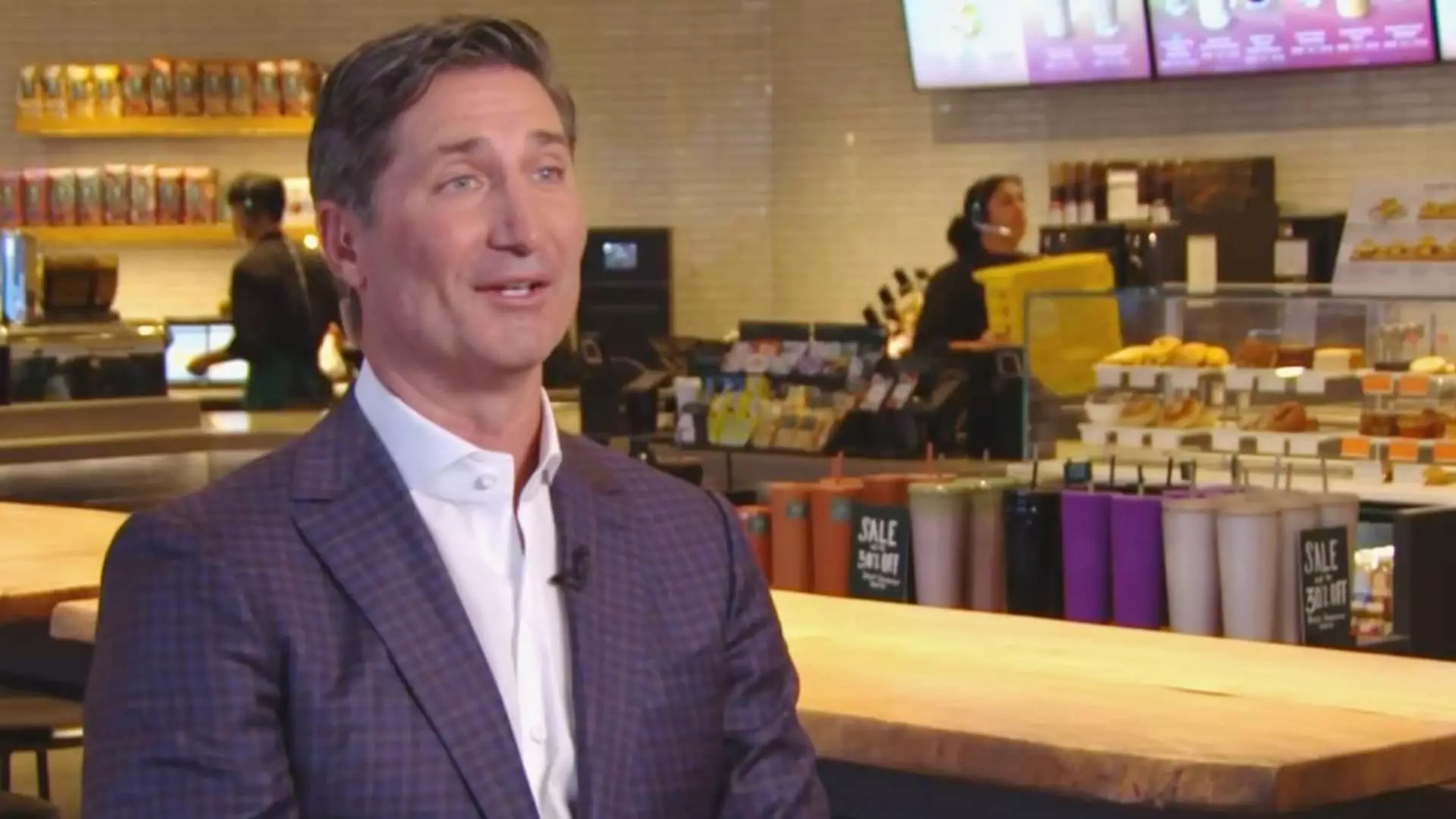In recent months, Starbucks has faced growing concerns as it reported a troubling pattern of declining sales over three consecutive quarters. During a recent quarterly earnings call, CEO Brian Niccol shared insights into the company’s approach to reversing this trend. Recognizing the crucial nature of customer satisfaction in driving revenue, Starbucks appears committed to re-evaluating both its operational strategies and its customer engagement methods.
One of the foremost goals outlined by Niccol is to enhance the efficiency of service, specifically aiming to prepare customized drinks for customers within a four-minute window. Currently, about 50% of orders fall within that target timeframe, but there exists considerable room for improvement. Speedy service remains paramount, especially when 30% of transactions involve mobile orders—a significant portion of Starbucks’ business model that requires scrutiny.
Addressing the complexities that arise from mobile ordering, Niccol articulated the need for improvements in the application’s timing accuracy. Customers, accustomed to a high-volume mobile environment, often encounter frustrations when order pickups become tangled with in-store transactions. To mitigate this issue, Niccol proposed clearer distinctions between mobile and in-person order pickups. Additionally, he identified excessive customization as a hindrance to operational efficiency, suggesting a reevaluation of the extensive customization options provided through the mobile app.
This planned revamp could streamline operations and enhance the overall customer experience. Reducing unnecessary variations in drink customization and establishing more effective guidelines for baristas could lead to quicker service times, benefiting both employees and patrons alike.
Another significant change on the horizon is the optimization of Starbucks’ menu. Niccol emphasized the strategy of offering “fewer, better” items, aiming to refine the selection to ensure that every drink is crafted with consistent quality and speed. As Niccol characterized, lengthy menus often lead to inefficiencies and inconsistency in drink preparation. This alteration may not resonate positively with all customers, especially those who enjoy diverse options, but the long-term benefits of faster service and reliable quality could engender greater customer loyalty.
Starbucks is also evaluating its current menu items against its new four-minute service standard. This evaluation process will identify which items may no longer serve the brand’s commitment to service efficiency. The anticipation is that a more focused menu will not only simplify preparation for baristas but also elevate the overall quality of the drinks served.
Recognizing the essential role of ambiance in fostering customer loyalty, Niccol aims to restore Starbucks locations as the welcoming “third places” originally intended to be community hubs beyond home and work. Enhancements planned include a return to ceramic mugs for on-site customers and the reintroduction of friendly personal touches previously abandoned.
Additionally, the introspection into store design seeks to create inviting spaces with comfortable seating that encourages patronage and social interaction. Returning to a more traditional coffeehouse feel could differentiate Starbucks in a competitive market increasingly characterized by impersonal pickup locations. Even in primarily grab-and-go environments, design elements can foster a sense of community, reinforcing Starbucks’ identity as a beloved local gathering spot.
In terms of marketing strategy, Niccol has articulated a shift from a reward-centric approach focused solely on loyal customers. Starbucks aspirations to appeal to a wider audience, showcasing the premium quality of its offerings rather than relying on discount strategies that complicate operational processes.
This strategic pivot aligns with Niccol’s recognition of the detrimental nature of heavy discounts in affecting both customer perceptions and barista workloads. Transitioning to fewer, well-promoted items could instill a sense of value among existing and potential customers, reinvigorating foot traffic to stores.
Alongside marketing enhancements, Niccol is focused on optimizing staffing practices. An increase in scheduled hours for baristas aims to maintain high service levels and lower turnover rates, addressing one of the critical challenges in the hospitality sector. Enhanced staffing ensures that locations are adequately staffed during peak and shoulder hours, improving overall customer experience.
As Starbucks navigates through these transformative strategies, it is clear that CEO Brian Niccol’s focus on efficiency, customer relations, and brand identity could herald a significant shift for the iconic coffee chain. By refining operations and redefining the customer experience, Starbucks seeks not only to recover its declining sales but also to rejuvenate its place in the hearts of consumers as a quintessential coffeehouse experience. Through these deliberate and well-thought-out changes, Starbucks hopes to secure not just a return to profitability but a lasting legacy as a communal hub for coffee lovers everywhere.

